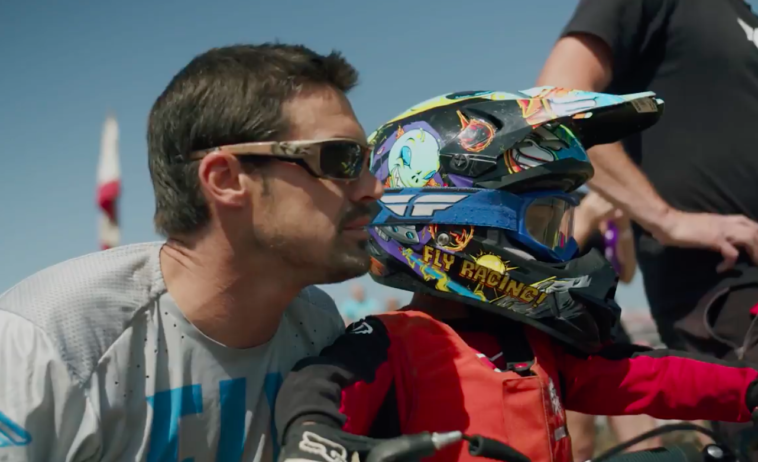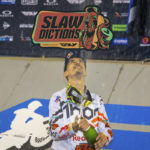The learning process is perpetual. It never ends. Whether that is in life in general, or within a specific aspect of an individuals professional life: the learning never stops. And, you know what, sometimes it’s real damn exhausting. Especially for an individual like myself that has his own set of learning disabilities, it can really feel like my brain is about to fall out of my skull and flop onto the ground faster than Wes Williams smashing the “decline” button when I call him (this joke literally never gets old to me. Sorry, not sorry). But, learning is progression and progression is learning. Or something like that. I dunno. Leave me alone, okay? I just want to eat Taco Bell and retire.
Most of us creatives spend countless hours on YouTube watching tutorials on how to better improve our craft, learning about a new piece of technology that’ll help our craft and so forth. When you are first starting out (specifically within filmmaking), it’s easy to make very big gains forward very quickly. And they are very noticeable gains forward. However, the further you climb up the ladder, you start to see that the gains are much, much smaller. But it’s part of the process. And, for Garrett Poll, this applied to him while filming his docu-series, Coalescence, just as much as it applies to myself and Wes on our own projects.
“Each episode of Coalescence that I shot, I felt like I learned more and more,” explained Garrett. “I tried to do a mental debrief and decipher what worked, what didn’t work, what I could’ve improved upon, and what I would do differently next time (like double checking the camera so your rider doesn’t have to do an entire interview twice).”
No matter your skillset behind the camera, I think that applies to all of us. For myself, I always see all of the things I did wrong, or the things that fell flat and need improving. It’s a good thing to be so self-aware of your shortcomings, but I would benefit from also taking notice of my wins and the things I did well on a specific project. I always put a lot of emphasis on my interview setups: from framing and lensing, to lighting and the removal of light. Interviews are tough, especially when you are first starting out. As Garrett explains, there are a lot of rules you are blissfully unaware of.
“When I shot the first episode with Sebastian, I had been filming at the races for two years, but I had never tried my hand at interviews, let alone a mini doc series,” he explained. “I picked his interview spot solely based on wanting his bikes in the background, but I didn’t think about the fact that a family was hanging out right next to us with a kid driving around on a pit bike nearby, so that was my first lesson learned. Pick a spot that will isolate their audio as best as possible.”
I will add that no matter the circumstances, shooting an interview at a live dirtbike track is perhaps the dumbest idea possible, but clients often don’t think about that until the time goes and they go, “OOOOOHHHHHHH”. However, we are often left with only that option. So, you learn to make do with the hand you’ve been dealt.
“I also should’ve lowered my camera to his eye level. In film, the camera’s height relative to the talent can convey different emotions,” Garrett continued. “For example, the camera looking up at the talent conveys power whereas the camera looking down at the talent can make them feel small or less powerful. So a neutral camera angle can make the talent feel more relatable or equal to the viewer, which is what I want for this series. Also, Kyle Cowling gave some great advice on using a stool or apple box for the rider so that the chair doesn’t distract the viewer. I’ve since applied this method on multiple shoots.”
If it is any consolation, I was notorious for doing the exact same thing. It took me a while to realize how awful it was having your subject sit in a big beach/lawn chair. It’s the little things like that which will add up to help you achieve a more visually pleasing interview.
Now, it’s time to discuss an aspect of Garrett’s project that hits too close to home for ‘ol Art Dog. Garrett, what happened?
“Taking those lessons from Sebastian’s interview, I decided to film Davenport’s in his trailer which made for a much cleaner interview noise-wise. The light fabric blinds even made for a really nice soft light on him. In a perfect world, I would’ve added a small hair light to separate him from the background. Nonetheless, we do the interview and as soon as he finishes, I check the camera and I start mentally face-palming my head into oblivion. I forgot to hit record! Luckily, Davenport was a good sport and started from the top again.”
Been there, done that, sir. The worst part? It happened on a Red Bull job. While it wasn’t an interview that I didn’t roll on, it was a very specific moment that could not be recreated. So, that was cool. I also completely deleted and formatted an SSD card before I ever dumped it onto my hard drive. I do not care to discuss these details any further. Thanks.
RELATED: The Origins of Coalescence
“For Solomon’s interview I decided to try the Slawdog wide angle, which was that of the handheld run ‘n gun technique. This technique is great, as long as the rider isn’t head and shoulders taller than you and is standing for the entire interview! Not to mention it was a particularly windy day and we were out in the open for the first half of the interview,” explained Garrett. “Combine that with a lot of bike noise, and it was a rough go once I got into the edit bay. I ended up paying a local audio engineer to clean up the audio for me and he made it sound better than I thought was possible!”
What was a big lesson learned for Garrett? “I should’ve stuck with the sit down interview setup in a more controlled environment for the audio. I learned I really need to prioritize the noise floor levels above everything else seeing as the interview will have loads of B-roll over it.”
Personally, I hate audio. I think it’s stupid and I should be allowed to have a full time sound mixer on set with me because I am already stressed out about enough shit. But, that’s not real life… Yet. If you have beautiful images but shit audio, the images lose a bit of their appeal. However, if you have clean audio and shit visuals, that is more socially and morally acceptable. But, it is tricky while shooting at a live dirtbike track. My biggest tip I will share with you is simple, yet a game changer. If you have to shoot an interview in a windy environment or a loud environment, place the subject so that their back is going into the wind or in the direction of the loud noises. This allows the subjects body to block all of the wind and/or noise and helps you achieve far cleaner audio than it would with them facing into the wind or noises. No, it won’t completely kill the elements, but you will be surprised how much of a difference it’ll make.
What’s most important with Garrett taking on a project like this himself is all that he learned. The mistakes and ah-ha moments that he had while creating a story (Coalescence) is far more valuable then anything he can learn in doing an Instagram banger. And, in tackling such an ambitious project with no experience in storytelling is precisely how he grows, improves, and, one days, takes my job, ignores my calls, and Wes and I just go buy a Taco Bell in Idaho and call it a career.
Stay tuned to this here website for the three part docu-series next week!





